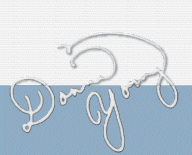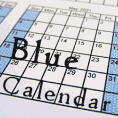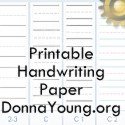The Lab Book & Grades
Dr. Wile's Lab Book Instructions
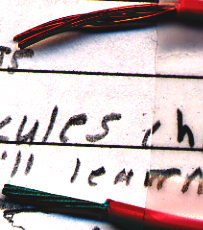 Let's first look at what Dr. Wile writes on page 2-3 of the Solutions
and Tests book.
Let's first look at what Dr. Wile writes on page 2-3 of the Solutions
and Tests book.
After student reads through the experiment, he should start a new
page in his lab book.
-The first page should be used to write down all of the data taken during
the experiment.
-The student should perform any exercises in the experiment.
-After the experiment, the student should write a brief report after the
page where the data and exercises were written.
-The report should discuss what was done and what was learned.
-A person reading the report should be able to figure out the procedure
and what was learned from the experiment.
From those points you can see several things that every lab report for
this course should have.
-The first page which contains the data. This page should also have the
experiment name, the date, and possibly the student's name. It should be
legible. The supply list should be complete. I'm sure it would be ok if
the data took more than one page. Drawings and charts should be included if applicable and should be labeled and relatively neat.
-The page following the data should have the discussion of the procedure
and what was learned. It is ideal if the procedure is written in order and
is complete, and again, it should be legible. "A person reading the report should be able to figure out the procedure
and what was learned from the experiment."
Evaluating Your Child's Lab Book - A Sample Rubric
I'm asked this question a lot -- "How do I grade the lab book?"
There is no canned answer, but I can offer a rubric to serve as a guideline. If you use it, please consider the qualities and adjust them to suit your requirements. I also want you to notice that the main difference between 2 points and 3 points is neatness. If this is unfair to your child because of a condition that makes neatness impossible, then adjust the rubric accordingly.
Note: This rubric is not meant to be used with Apologia's physical science, biology, or beyond.
Why: Because this is an entry level lab class rubric that I made up. =) However, if your child is in one of the higher Exploring Creation ... classes, but this is the first time with such a class with lab reports, then go ahead and use the rubric for the first 4 or 5 labs -- while your child is learning how to write a good lab report, and then use a rubric that better fits the age group.
A Sample Rubric (for Exploring Creation with General Science)
| Items | Points A perfect score is 12 |
|||
|---|---|---|---|---|
| 0 points | 1 point | 2 points | 3 points | |
| Supply list is | Omitted, or missing several items, or mostly unreadable | Left out no more than 1 item or is not completely legible/neat | Complete and legible | Complete and very neat |
| Data | Incomplete, or mostly unreadable, or very sloppy | Complete but is not completely legible/neat | Complete and legible | Complete and very neat |
| *Procedure is | Omitted, or missing several steps, or out of order, or mostly unreadable | In order and mostly complete, not completely legible/neat | In order, complete, and is legible | Complete, in order, and very neat |
| *What is learned | Omitted from report, or is illogical, or unreadable | Included and mostly complete, is logical, not completely legible/neat | Complete, logical, and legible | Complete, logical, and very neat |
Getting a Grade from the Points
In this rubric, there are 4 items and each item has 4 grading scales: 0, 1, 2, and 3.
Use the rubric as is or alter it to suit your requirements.
- Grade the lab report, taking note of how many points each of the 4 items earn.
- Count the number of points earned. Use the table below for the letter grade.
Notice the missing D-. It does not seem right for a piece of work with only one good point out of 12 to receive a grade higher than F.
| Points | 0 | 1 | 2 | 3 | 4 | 5 | 6 | 7 | 8 | 9 | 10 | 11 | 12 |
| Letter | F | F | D | D+ | C- | C | C+ | B- | B | B+ | A- | A | A+ |
Notes
Notice that the points swings on completeness and neatness. Those are important items in a lab book. One of the purposes of a lab book is to be able to repeat experiments based on what is written in the lab report. This is partly based on the 3rd point made by Dr. Wile on page 3 of the Solutions and Tests book. It is important to note that a "B grade" lab report will fulfill the lab book objectives. An "A grade" lab report is simply impressively neat and well written.
Converting the Letter Grade to a Percentage
If you need a percentage, use your grade scale to convert the letter to a percentage. In case you missed this: Dr. Wile suggests the use of the 90/80/70/60 grade scale for his courses. I recommend that you do.
Two Grade Scales
For your convenience here are two grade scale examples.
Two Grading Scale Examples- Simple
A=94-100; B=86-93; C=77-85; D=70-76; F=below 70
A=90-100; B=80-89; C=70-79; D=60-69; F=below 60
Two Grading Scale Examples- Detailed
90/80/70/60 Grade Scale
A+ 100-98; A 97-94; A- 93-90;
B+ 89-87; B 86-84; B- 83-80;
C+ 79-77; C 76-74; C- 73-70;
D+ 69-67; D 86-84; D- 63-60;
F below 60
94/86/77/70 Grade Scale
A+ 100-99; A 98-96; A- 95-94;
B+ 93-91; B 90-88; B- 87-86;
C+ 85-83; C 82-80; C- 79-77;
D+ 76-75; D 74-72; D- 71-70;
F below 70
Grade Weights
After your student has learned how to do the lab reports, you might want to include the report grade as part of his final grade. Until then, the test is 100% of the grade. Yes, the child does the On Your Own questions and spends one or two days on the study guide, but those items are part of learning. The reward for doing those parts well is becoming more knowledgeable and, over time, more logical. The test is 100% of the grade until the lab reports are added. So.. after your student has learned how to do the lab reports, the lab reports will become 35% of the grade and the test 65% of the grade.
How to Weigh the Grades
For the sake of this example, let's say that the child earned an average grade of "B-" on his lab reports for a module. Converted to a number score that might be an 82. Let's say the child scored an 85 on the test.
Okay, for one module we have an average score of 82 for the Lab Reports and a module test score of 85.
Steps:- First apply the percentage weights:
- Labs 35% times grade 82 = 28.7
- Test 65% times grade 85 = 55.25
- Add them: 55.25 + 28.7 = 83.95
- Round off to 84, a "B" according to Dr. Wile's suggested grade scale.

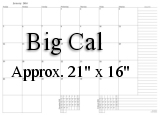
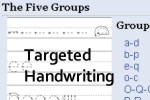 Targeted Teaching Manuscript Handwriting
Targeted Teaching Manuscript Handwriting
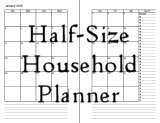 Crank up those Printers!
Crank up those Printers!